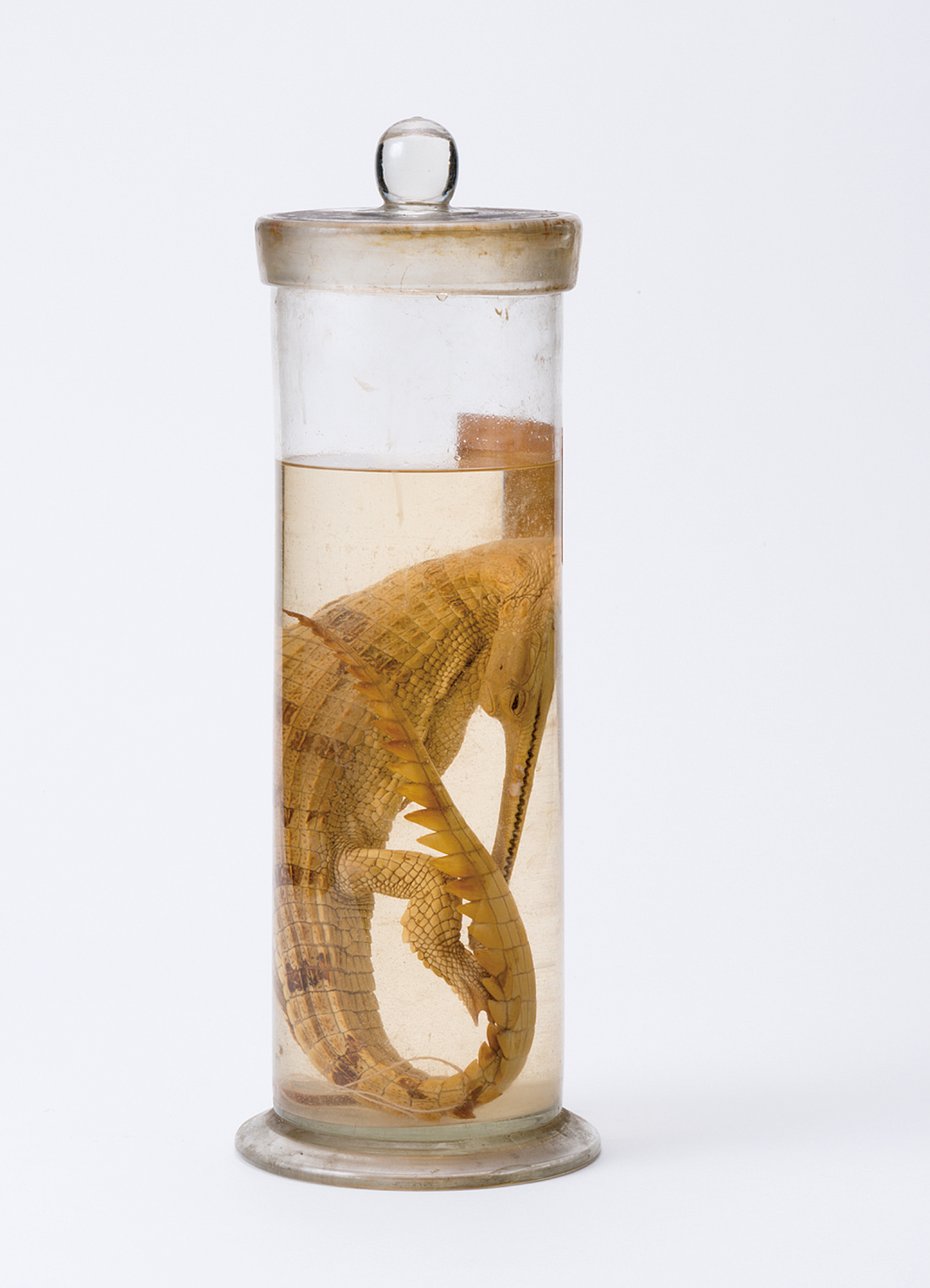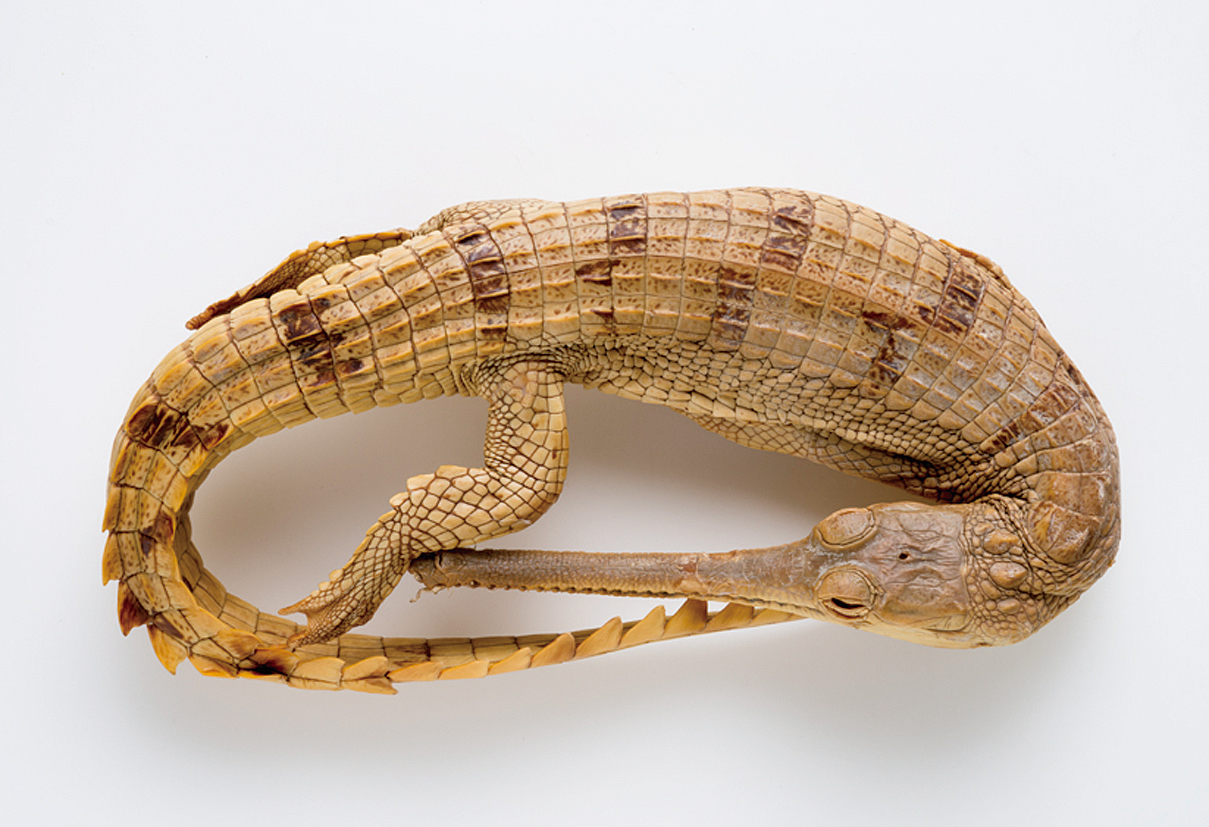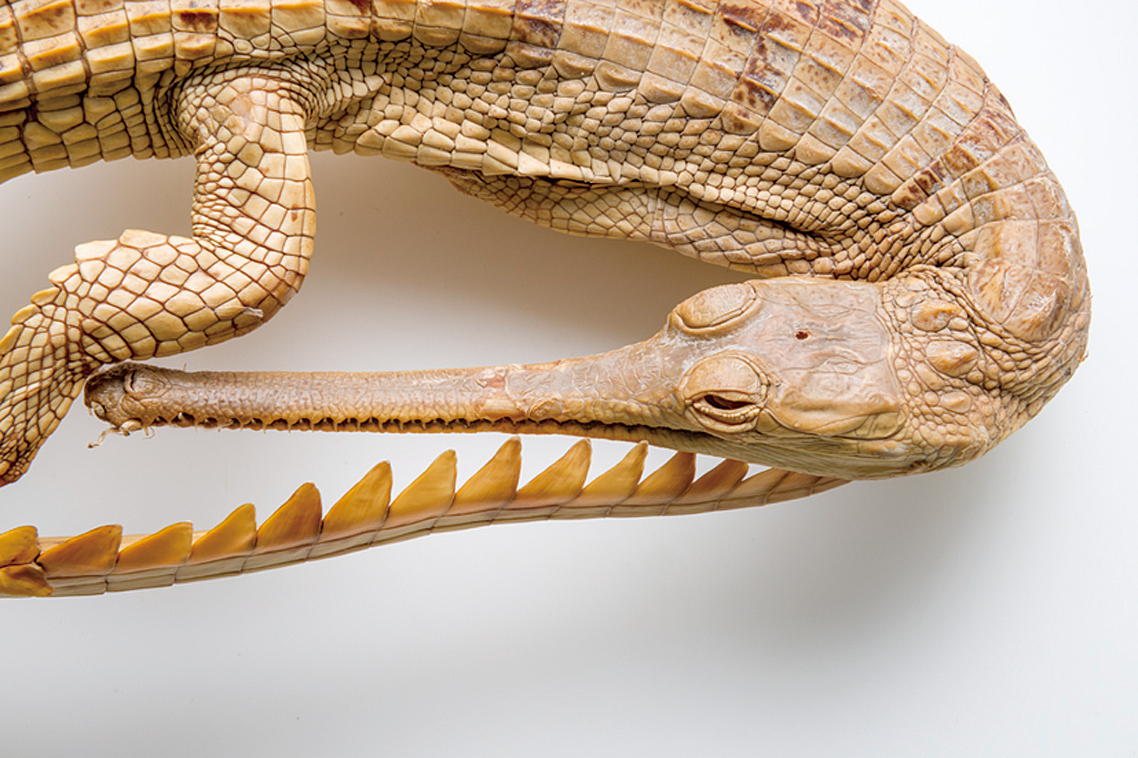B36
Fixed specimen of gharial
As you can see it in this specimen, gharial is a crocodile with the characteristic elongated snout. The species is distributed in India, Nepal, Pakistan and Bangladesh. However, due to environmental destruction, the population has decreased rapidly, and the species is endangered. Few gharials are maintained in zoo of Japan. It is difficult to observe them. It has been suggested that the characteristic long snout is functionally adapted to reduce the resistance of water when it opens and closes the jaw in water. This form enables the gharial to rapidly move the mandible to feed on fishes. The gharial is a large crocodile with its length of 5 m, and they are often observed to feed on the other animals than fishes. This specimen has been collected by Dr. Seiho Nishi who studied the comparative anatomy at Faculty of Medicine, the University of Tokyo until the 1940s since the 1920s. Dr. Nishi was an authority on comparative anatomy. He established the anatomy and morphology in Japan. Because Dr. Seiho Nishi had a great influence, the anatomy has been developed by the medical science rather than zoology. The specimens that Dr. Nishi had collected in the University of Tokyo, was transferred to the University Museum, and they indicates the dawn of the anatomy of Japan. At the University Museum of the University of Tokyo, we have morphologically investigated the mastication mechanism of crocodiles. Even 80 years later after that this specimen was collected, this valuable specimen has contributed to the forefront of the research. (Hideki Endo & Mayu Kusumi)



